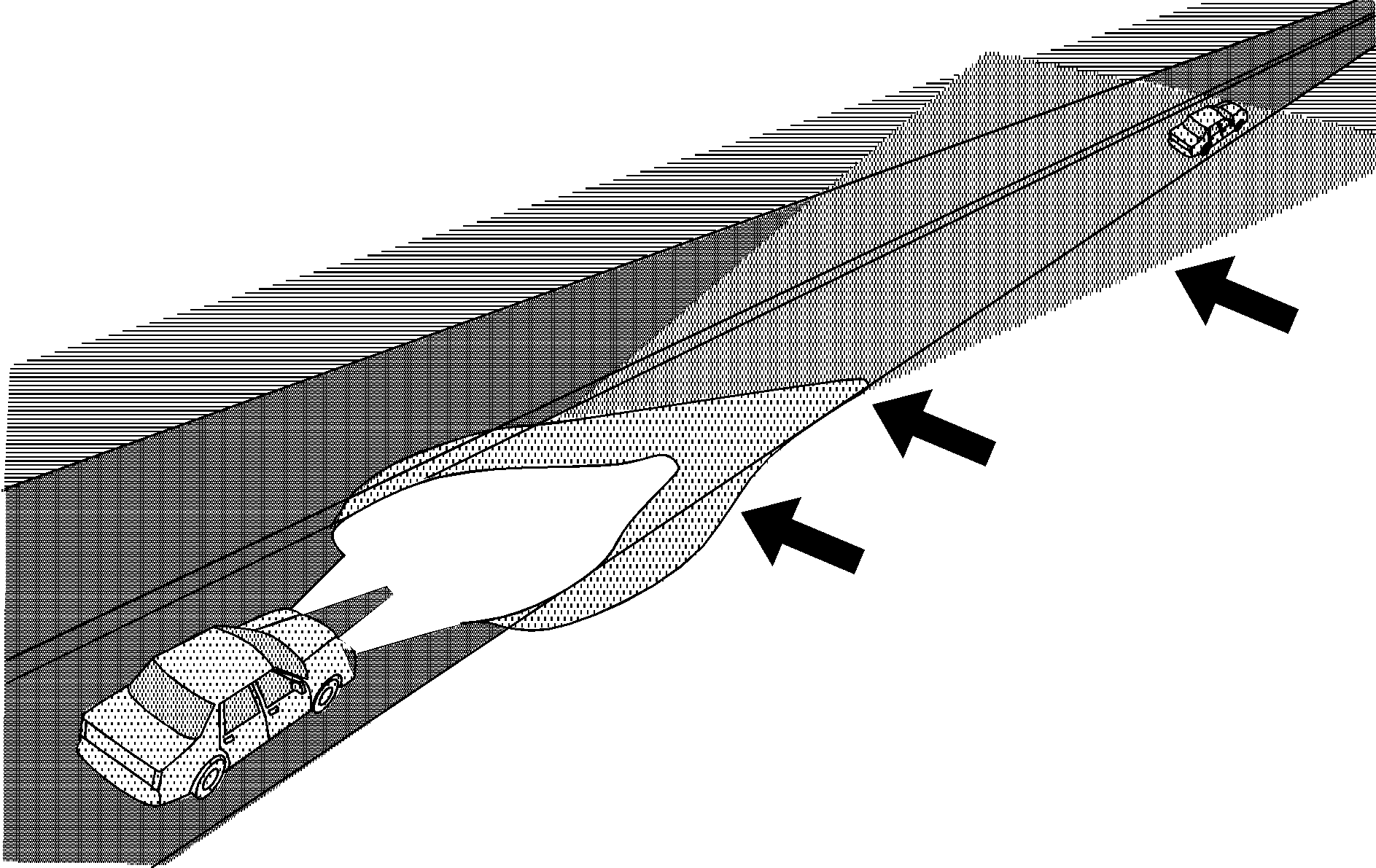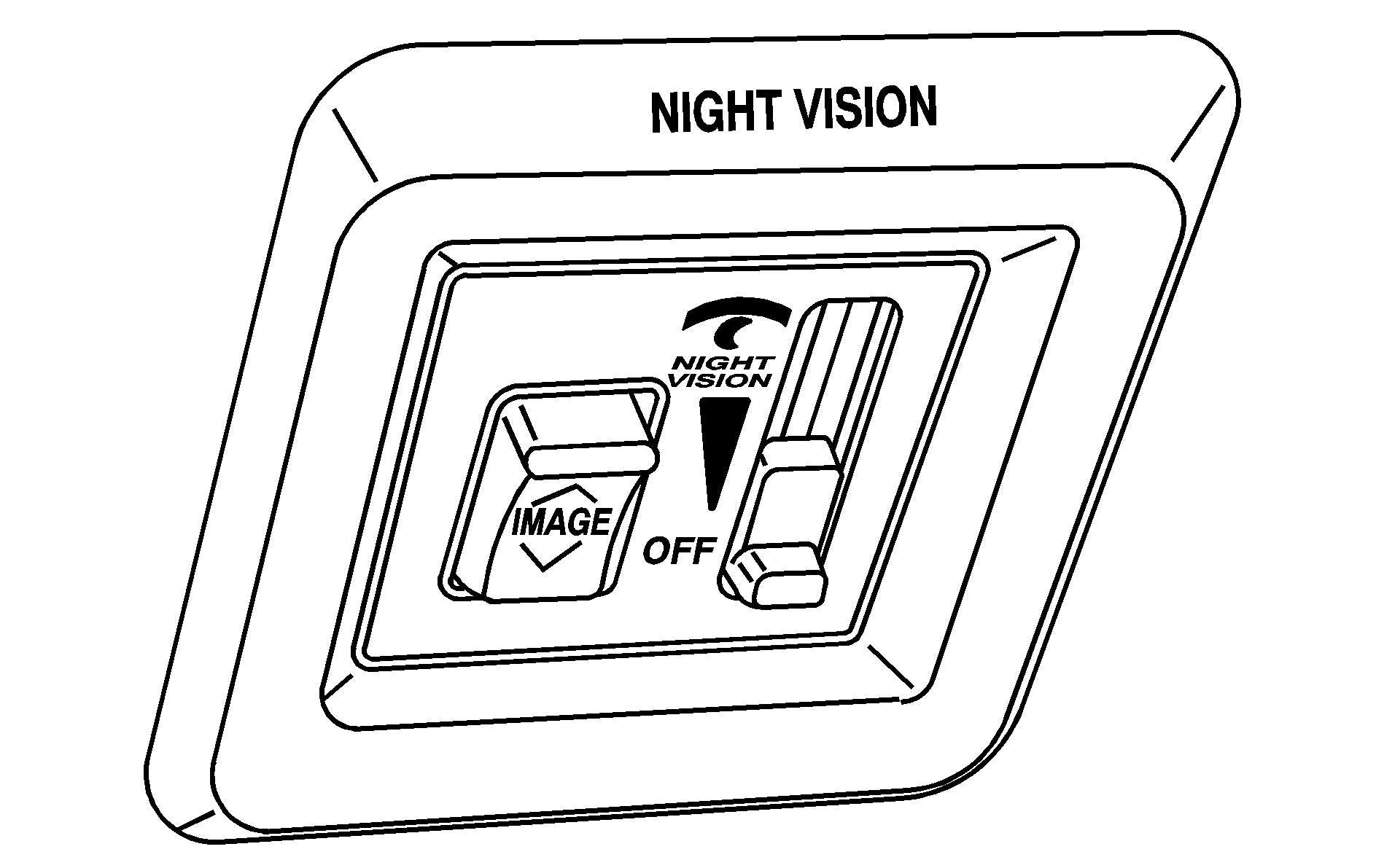If your vehicle is equipped with the Night Vision System, it can help you see better when you drive at night. The system works by sensing heat given off by objects in its field of view. Warmer objects, such as pedestrians, animals, and other moving vehicles, will appear whiter. Colder objects, such as the sky, signs, and parked vehicles, will appear darker.

Use this system as an aid to help you in seeing objects beyond the headlamps. Do this by occasionally glancing at the image as you would a rearview mirror. Do not stare at the image.
The Night Vision System can be operated if:
| • | The instrument panel brightness knob is in any position except OFF. |
| • | It is dark enough outside. |
| • | The headlamps or fog lamps (if equipped) are on. |
| • | The ignition is turned to ON. |

The controls for this feature are located to the left of and below the steering wheel. They are used to adjust the brightness and location of the image. Adjust the IMAGE control so the image is as low as possible while remaining visible.
Slide the dimmer control until the image is no brighter than necessary to clearly and comfortably see the image.
When the system comes on, you will see the Night Vision System symbol in the image. After about one minute, you should see the view of the road ahead. If you do not see the image after about two minutes (on cold days it may take longer for the image to display), there may be something wrong with the system. See your dealer for service.
Caution: If the Night Vision System image is too bright, or too high in your field of view, it may take you more time to see things you need to see when it is dark outside. Be sure to keep the image dim and placed low in your field of view.
Remember that the Night Vision System can only help you see objects that are warmer or colder than the surroundings. It can not sense things like brake lights, turn signals or emergency flashers, traffic lights, or signs.
In dry, clear weather, the system can see pedestrians, animals, and the direction of the road ahead. In light rain, light snow, or light fog the image may not be as clear and you may not be able to see the direction of the road ahead. In more severe weather conditions, the image may be unclear and not usable.
Caution: Do not use the Night Vision System to replace your normal view of the road ahead. It can not tell you how far away things are. It senses only warmer or colder objects, not all objects. Driving by staring at the image might cause you not to see important objects in the road ahead. If you do not see something in time, you could have a crash in which you and others could be injured. Use the Night Vision System only as a driving aid.
It is also important to keep your windshield, the HUD (Head-Up Display for the Night Vision System) lens, and the camera lens clean. If you do not keep everything clean, system performance may be affected.
The HUD system is located on the driver's side of the instrument panel, next to the windshield and the camera is located behind the center of the front grille.
Use only household glass cleaner and a soft cloth to clean the HUD or camera lens. Wipe gently and dry thoroughly.
Notice: When cleaning, be careful not to scratch the HUD or camera lenses. Do not spray glass cleaner directly on the HUD lens because the cleaner could leak inside the unit and cause damage.
The camera must also be aligned to work correctly. If the camera needs adjustment, see your dealer. Do not attempt to adjust the camera yourself.
